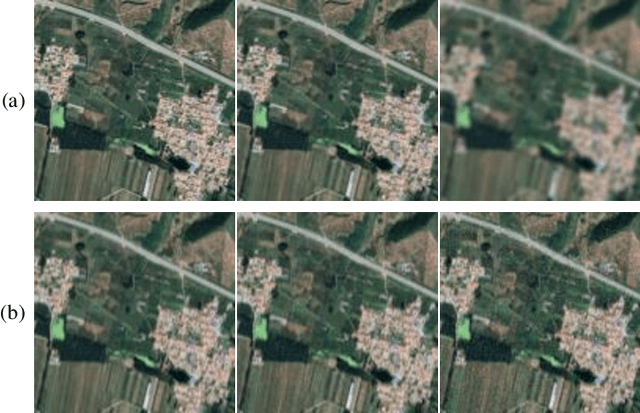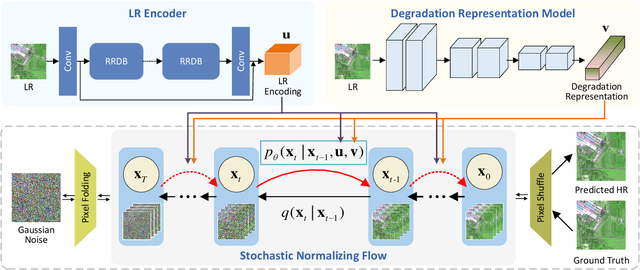Blind Super-Resolution for Remote Sensing Images via Conditional Stochastic Normalizing Flows
Paper and Code
Oct 14, 2022



Remote sensing images (RSIs) in real scenes may be disturbed by multiple factors such as optical blur, undersampling, and additional noise, resulting in complex and diverse degradation models. At present, the mainstream SR algorithms only consider a single and fixed degradation (such as bicubic interpolation) and cannot flexibly handle complex degradations in real scenes. Therefore, designing a super-resolution (SR) model that can cope with various degradations is gradually attracting the attention of researchers. Some studies first estimate the degradation kernels and then perform degradation-adaptive SR but face the problems of estimation error amplification and insufficient high-frequency details in the results. Although blind SR algorithms based on generative adversarial networks (GAN) have greatly improved visual quality, they still suffer from pseudo-texture, mode collapse, and poor training stability. In this article, we propose a novel blind SR framework based on the stochastic normalizing flow (BlindSRSNF) to address the above problems. BlindSRSNF learns the conditional probability distribution over the high-resolution image space given a low-resolution (LR) image by explicitly optimizing the variational bound on the likelihood. BlindSRSNF is easy to train and can generate photo-realistic SR results that outperform GAN-based models. Besides, we introduce a degradation representation strategy based on contrastive learning to avoid the error amplification problem caused by the explicit degradation estimation. Comprehensive experiments show that the proposed algorithm can obtain SR results with excellent visual perception quality on both simulated LR and real-world RSIs.
 Add to Chrome
Add to Chrome Add to Firefox
Add to Firefox Add to Edge
Add to Edge